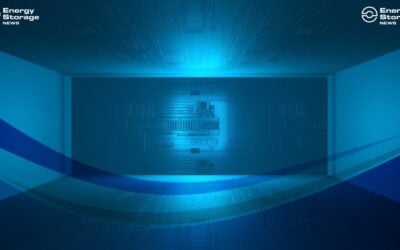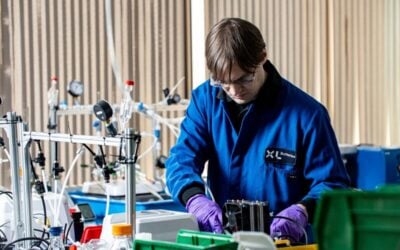
Eos Energy Enterprises has said that equipment and machinery will begin arriving next month as the zinc-based battery storage company expands its manufacturing facility near Pittsburgh, Pennsylvania, US.
Eos had previously said it would triple the current production capacity of its plant in Turtle Creek, bringing it up to 800MWh of its Znyth brand aqueous zinc batteries. Znyth units offer up to three hours storage duration each but can be ‘stacked’ to create storage systems with up to 12 hours storage and discharge duration at full power.
The manufacturer will add an extra 46,000 square feet of factory space and hire at least 125 new employees, it said yesterday. The land has been rented on a five-year lease from the Regional Industrial Development Corporation of Southwestern Pennsylvania.
Equipment is expected to arrive in March and the site expansion could be completed as early as this September, Eos claimed.
Try Premium for just $1
- Full premium access for the first month at only $1
- Converts to an annual rate after 30 days unless cancelled
- Cancel anytime during the trial period
Premium Benefits
- Expert industry analysis and interviews
- Digital access to PV Tech Power journal
- Exclusive event discounts
Or get the full Premium subscription right away
Or continue reading this article for free
“We’re bringing quality green jobs to the region and building a renewable energy hub in the middle of coal country,” Eos CEO Joe Mastrangelo said.
Eos has already ramped up production from 65MWh annual capacity in 2020 to 260MWh last year. The third iteration of its battery systems is expected to begin performance testing this quarter and in December Eos secured a supply deal for high purity zinc-bromide — a key component of the batteries’ electrolyte — with chemicals group TETRA Technologies, from US-based sources.
The battery maker listed on NASDAQ last year. It claimed US$137.4 million of customer orders had been booked during 2021 including its biggest single customer order yet, a 300MWh deal with EPC firm Blue Ridge Power.
During 2021 Eos also received a US$100 million investment commitment from Koch Industries venture capital arm Koch Strategic Platforms, as well as a US$25 million equipment financing deal with debt and equipment financing company Trinity Capital, which the battery company said would go towards purchasing equipment for the Turtle Creek plant.
Its manufacturing operations had been started up as a joint venture (JV) with nuclear industry technology company Holtec, but Eos bought out its partner to own the JV, called HI-POWER. The Turtle Creek plant is on a former nuclear equipment manufacturing facility site which was used by Westinghouse, one of Holtec’s partners.
Eos is one of the founder members of the Long Duration Energy Storage Council, an international collaboration between energy storage companies, end-user customers and other stakeholders, which tech giants Google and Microsoft recently signed up to.


![burns and mcdonnell GA_Battery_Storage_003[84] The maturing industry has allowed EPCs to "get more creative with engineering technology and construction equipment to help streamline operations in the field," Julian Hoover says. Image: Burns & McDonnell](https://www.energy-storage.news/wp-content/uploads/elementor/thumbs/burns-and-mcdonnell-GA_Battery_Storage_00384-rgklnp65oz5okwj4j525f5bdz9y57j338jh6zpqdvo.jpg)


